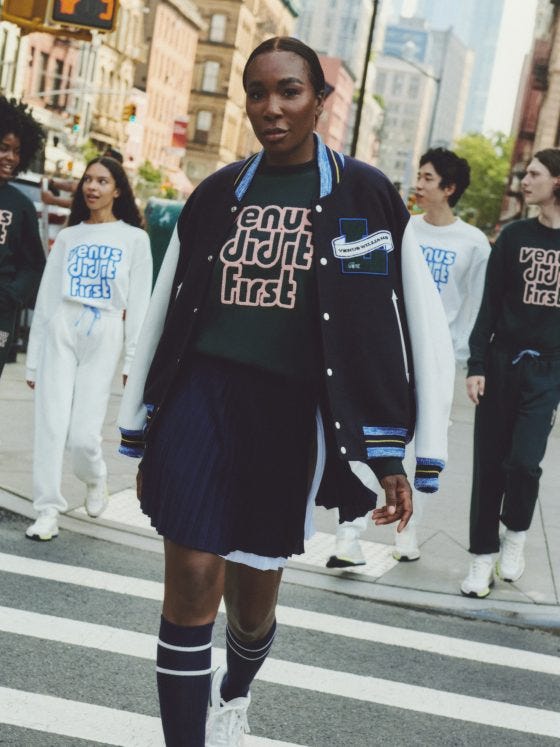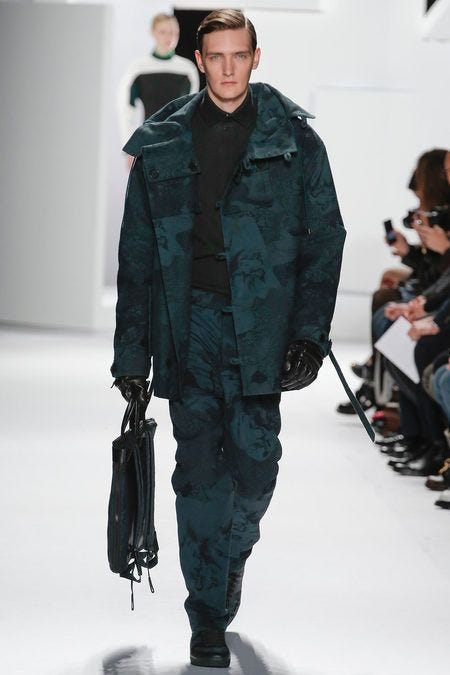How Lacoste Reclaimed Its Relevance
The longstanding tennis brand is now back in full force.
In the mid-2000s, Lacoste was one of the brands that everyone was talking about in the U.S. The price point was relatively high in comparison to other department store brands, making it somewhat aspirational for people who shopped at places like Macy’s and Dillard’s. Seeing the crocodile logo was akin to the Ralph Lauren polo player. But this was just the beginning of their turnaround strategy that would span two decades. The brand’s recent resurgence is evident to everyone, and part of their success is leaning into its tennis roots.
René Lacoste started the company in 1933 but he wasn’t initially focused on fashion. He was a tennis player and back then the sport was similar to golf - it was more important to dress up and look good rather than wear anything that was functional. He designed a short sleeve shirt that was breathable and would allow him to perform while not deviating too much from looking professional. Interestingly, they’re the first clothing brand to have a logo prominently displayed on their pieces. Their popularity started to swell in the tennis community and around Europe but it wasn’t until the 1950’s when the company really became known around the world. They entered markets through a complex network of partners (IZOD helped facilitate their U.S. market entry.) This expansion continued to push them from an upmarket tennis apparel company to a full lifestyle brand, and the crocodile was everywhere. As it became more synonymous with fashion, they always tried to keep their position as a high-end brand, but their ambitions for growth got the best of them. By the 90’s, they had over 1,000 partners and no longer had control of the brand story. Lacoste was now oversaturated in every market by trying to be everything for everyone. Their polos were on every discount rack and could be found in places like TJ Maxx and Ross, which dramatically watered down its pricing power. It completely lost its cool factor and was seemingly destined to wither away into a “once hip but now irrelevant” status forever.
The turnaround started in 2001 when Christophe Lemaire was appointed Creative Director and Robert Siegel became the brand’s CEO in the following year. While Robert focused on reeling back the massive number of licensing agreements abroad, Christophe tried to elevate the brand by bringing it to New York Fashion week. Over the years it has become more and more common for brands who aren’t high fashion/haute couture to grace the runway, so they used this as a marketing tactic. Unfortunately it coincided at a time when they were still revamping the brand narrative. While they did see an increase in popularity within their original target market, it still left many customers wondering exactly who they were and what they were trying to become.
In 2015 they brought on Thierry Guibert to lead the brand, a time when athleisure was one of the hottest parts of retail. Two years later, Louise Trotter became their Creative Director, which is when things really started to change. In 2017 alone they brought on Novak Djokovic as a brand ambassador, hosted a fashion show during Paris Fashion Week to celebrate their 85th anniversary, launched a collaboration with Supreme (which was arguably the top brand in streetwear at the time), and revamped their Beverly Hills flagship on Rodeo Drive1. This period represented a celebration of the extensive work the team had done to change its image among customers and the fashion industry as a whole.
In the last three years they’ve continued to show why they’re here to stay. Venus Williams became a brand ambassador in 2022 and has been very involved with a lot of their creative strategy. Activations, tennis court takeovers, and collaborations are consistently launched with names like the Shangri-La Paris, Netflix, and Japan-based brand NEIGHBORHOOD. Their recent collections feel much more elevated and are getting people excited about the brand again. Éric Vallat was appointed as their new CEO a few weeks ago and will assume the role starting tomorrow. He has a background in luxury, and with all the work that’s been done to turn Lacoste around over the last 20 years, he’ll focus on keeping their momentum high.
Fashionista; From Supreme Collabs to New Stores to Paris Fashion Week, Here's How Lacoste Is Trying to Stay Relevant




Great article about a great comeback!